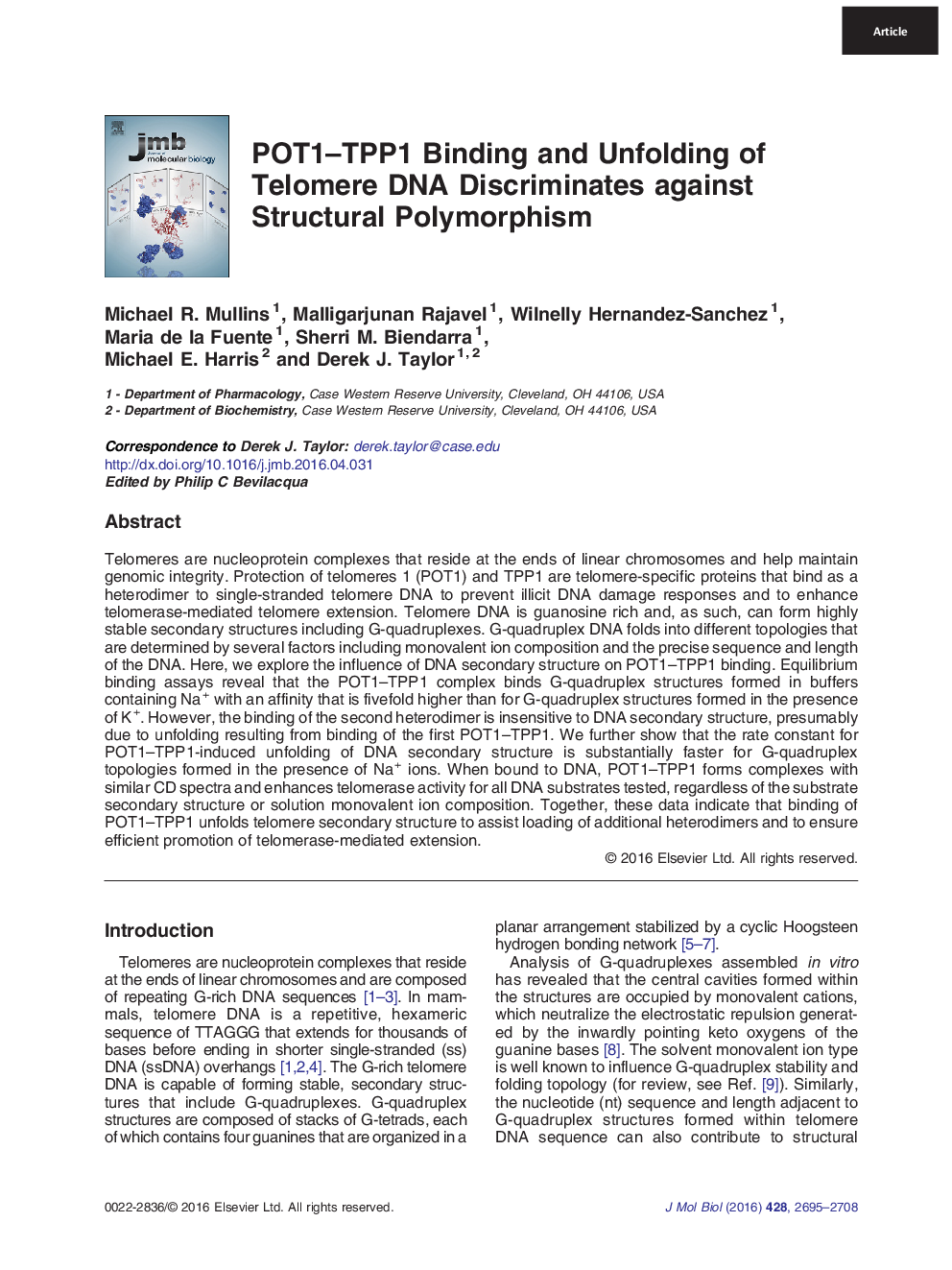| کد مقاله | کد نشریه | سال انتشار | مقاله انگلیسی | نسخه تمام متن |
|---|---|---|---|---|
| 2184303 | 1095826 | 2016 | 14 صفحه PDF | دانلود رایگان |

• POT1 and TPP1 bind exclusively to the single-stranded overhang of telomeres to protect telomere DNA and regulate telomerase activity. The G-rich telomere DNA is capable of forming diverse structures, which likely control POT1–TPP1 recognition and telomere function.
• POT1–TPP1 affinity for G-quadruplex topologies formed in NaCl is five times higher than for G-quadruplex structures formed in KCl.
• Kinetics of POT1–TPP1 unfolding of different G-quadruplex topologies vary greatly.
• POT1–TPP1 enhances telomerase processivity, regardless of the telomere DNA secondary structure.
• This work provides important biochemical features of molecular recognition that govern the interactions of POT1–TPP1 with structured telomere DNA to mediate telomerase activity.
Telomeres are nucleoprotein complexes that reside at the ends of linear chromosomes and help maintain genomic integrity. Protection of telomeres 1 (POT1) and TPP1 are telomere-specific proteins that bind as a heterodimer to single-stranded telomere DNA to prevent illicit DNA damage responses and to enhance telomerase-mediated telomere extension. Telomere DNA is guanosine rich and, as such, can form highly stable secondary structures including G-quadruplexes. G-quadruplex DNA folds into different topologies that are determined by several factors including monovalent ion composition and the precise sequence and length of the DNA. Here, we explore the influence of DNA secondary structure on POT1–TPP1 binding. Equilibrium binding assays reveal that the POT1–TPP1 complex binds G-quadruplex structures formed in buffers containing Na+ with an affinity that is fivefold higher than for G-quadruplex structures formed in the presence of K+. However, the binding of the second heterodimer is insensitive to DNA secondary structure, presumably due to unfolding resulting from binding of the first POT1–TPP1. We further show that the rate constant for POT1–TPP1-induced unfolding of DNA secondary structure is substantially faster for G-quadruplex topologies formed in the presence of Na+ ions. When bound to DNA, POT1–TPP1 forms complexes with similar CD spectra and enhances telomerase activity for all DNA substrates tested, regardless of the substrate secondary structure or solution monovalent ion composition. Together, these data indicate that binding of POT1–TPP1 unfolds telomere secondary structure to assist loading of additional heterodimers and to ensure efficient promotion of telomerase-mediated extension.
Graphical AbstractFigure optionsDownload high-quality image (84 K)Download as PowerPoint slide
Journal: Journal of Molecular Biology - Volume 428, Issue 13, 3 July 2016, Pages 2695–2708